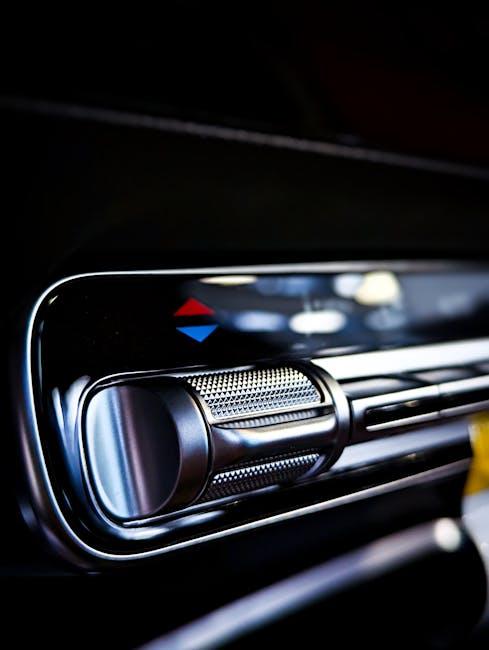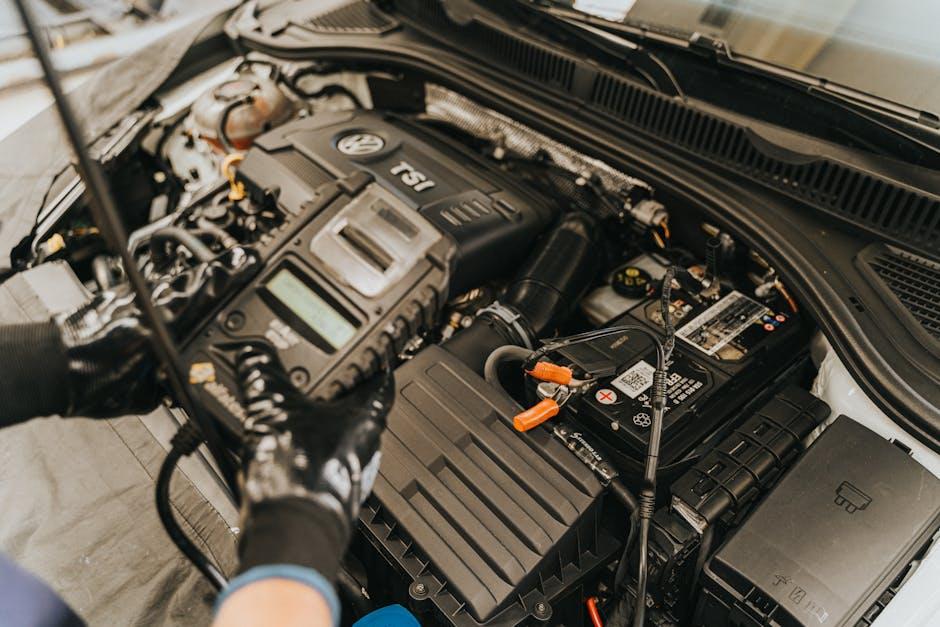Every car battery has its day, quietly powering your drives until, without much warning, it starts to falter. Recognizing the subtle signals of a failing car battery can mean the difference between a smooth morning commute and being stranded roadside. From sluggish engine starts to dimming headlights, these telltale signs often whisper before they shout. This article will explore the key indicators that your car battery is nearing the end of its life, helping you stay prepared and avoid unexpected breakdowns.
Table of Contents
- Understanding the Early Warning Signs of Battery Trouble
- Common Causes Behind Rapid Battery Drain
- How Temperature Fluctuations Affect Battery Performance
- Interpreting Dashboard Indicators and Warning Lights
- Simple Diagnostic Tests You Can Perform at Home
- Tips for Extending the Life of Your Car Battery
- Q&A
- The Conclusion

Understanding the Early Warning Signs of Battery Trouble
Before your car battery completely fails, it often gives subtle hints that something is amiss. You might notice the engine cranking more slowly than usual, or the headlights dimming when you turn on the radio. These symptoms occur because the battery struggles to hold a full charge, slipping into a state of gradual decline. Another common indicator is the persistent need to jump-start your vehicle, which signals that the battery’s ability to provide sufficient amperage is weakening.
Understanding these signs early can save you from unexpected breakdowns. Here are some key symptoms to watch for:
- Slow engine start: The car hesitates or takes more time than normal to fire up.
- Electrical issues: Problems with power windows, locking systems, or dashboard lights flickering.
- Corrosion or leakage: Visible buildup or damage around battery terminals indicating internal troubles.
- Warning lights: Battery or check engine lights illuminating on your dashboard.
| Symptom | Possible Cause | Recommended Action |
|---|---|---|
| Dim Headlights | Reduced battery voltage | Check battery and charging system |
| Frequent Jump Starts | Battery failing to hold charge | Test battery health or replace |
| Corroded Terminals | Acid leakage or poor contact | Clean or replace battery |

Common Causes Behind Rapid Battery Drain
When your car’s battery seems to lose power faster than usual, it often stems from underlying issues that silently drain its life. One major culprit is parasitic drain, where electrical components like interior lights, alarms, or faulty wiring remain active even when the car is off. This constant energy draw can wear down the battery rapidly, leaving you unexpectedly stranded. Additionally, extreme weather conditions, especially freezing cold or sweltering heat, can significantly weaken battery performance by affecting its chemical reactions.
Another frequent cause is poor maintenance or aging batteries, which are less able to hold a charge efficiently. Your alternator plays a pivotal role as well; if it malfunctions, it won’t recharge the battery properly, leading to quick depletion. Here’s a quick rundown of common factors that contribute to swift battery drainage:
- Leaving headlights or interior lights on accidentally
- Faulty or old alternator
- Corroded battery terminals disrupting charge flow
- Using high-powered electronics excessively
- Extreme temperature fluctuations stressing battery cells
| Cause | Effect on Battery |
|---|---|
| Parasitic Drain | Continuous energy loss |
| Old Battery | Reduced charge capacity |
| Faulty Alternator | Inadequate recharging |
| Corroded Terminals | Impeded electrical flow |
| Extreme Temperatures | Chemical reaction disruption |

How Temperature Fluctuations Affect Battery Performance
Temperature plays a silent yet powerful role in the health of your car battery. Extreme cold can dramatically reduce the battery’s ability to generate sufficient power, as chemical reactions within the battery slow down. This often leads to slow engine cranking or even complete failure to start. Conversely, high temperatures accelerate the evaporation of battery fluid, increasing the risk of corrosion and internal damage, which can shorten the battery’s lifespan. Fluctuating temperatures, especially those that swing widely between cold nights and hot days, place additional stress on the battery’s delicate internal components, gradually wearing it down.
To give you a clearer perspective, here’s a quick comparison of battery discharge rates at various temperature levels:
| Temperature | Battery Discharge Rate | Impact on Starting Power |
|---|---|---|
| 0°C (32°F) | 30% faster | Reduced cranking power |
| 25°C (77°F) | Normal | Optimal performance |
| 40°C (104°F) | 50% faster | Increased degradation |
- Cold Weather Symptoms: Slow engine start, dim headlights, and sluggish electrical response.
- Heat-Induced Issues: Swollen battery case, frequent jump-start needs, and shortened charge retention.

Interpreting Dashboard Indicators and Warning Lights
Dashboard indicators and warning lights are your vehicle’s way of communicating potential issues before they escalate. When your car battery starts to falter, specific symbols may illuminate on your dashboard, often catching your attention with an urgent glow. The battery icon itself is the primary signal, typically red, which warns that the battery voltage is low or there’s an issue with the charging system. Additionally, you might notice the check engine light flickering or staying on, as a failing battery can affect voltage-sensitive components, causing erratic engine behavior. Understanding these signs early means you’re more likely to avoid getting stranded with a dead battery.
Beyond the lights themselves, pay attention to subtle cues that these indicators might represent. A dimming or flickering dashboard light can hint at a weak battery struggling to provide consistent power. Sometimes, these warning signs coincide with difficulty starting the engine or unusual electrical behavior, such as sluggish power windows or malfunctioning infotainment systems. Below is a simple table summarizing common dashboard signals linked to battery failure and their meanings:
| Indicator Light | Meaning | Recommended Action |
|---|---|---|
| Battery Icon | Low battery charge or charging system fault | Test battery and alternator immediately |
| Check Engine Light | Possible voltage or sensor irregularities | Scan with diagnostic tool |
| ABS/Brake Light | Electrical system instability | Inspect battery and connections |
| Dim Dashboard Lights | Insufficient battery power | Check battery health and terminals |

Simple Diagnostic Tests You Can Perform at Home
Before heading to a mechanic, there are a few easy tests you can run right in your driveway to check your battery’s health. Start by turning on your headlights; if they appear dimmer than usual or flicker, this could be a sign the battery is struggling to supply consistent power. Next, try the “headlight brightness test” and the “starter test”—if your engine cranks slowly or takes multiple attempts to start, your battery may be losing its charge.
Another quick check involves inspecting the battery terminals for any visible corrosion, which can interfere with proper electrical contact. Here’s a simple guide to what you might observe:
| Symptom | Possible Cause | Action |
|---|---|---|
| Dim headlights | Weak battery charge | Try jump-starting the car |
| Slow engine crank | Battery voltage low | Perform voltage test or replace |
| Corroded terminals | Poor electrical connection | Clean terminals carefully |

Tips for Extending the Life of Your Car Battery
Maintaining your car battery’s health requires a blend of simple habits and routine checks. Regularly cleaning the battery terminals to prevent corrosion can drastically improve its performance. Additionally, avoiding short trips where the engine doesn’t fully warm up helps the alternator properly recharge the battery. Consider turning off all electrical accessories like lights, GPS, and radio when the engine isn’t running to minimize unnecessary battery drain.
Another crucial practice is to keep an eye on your battery’s charge during extreme weather conditions. Cold temperatures can reduce battery capacity, while excessive heat accelerates fluid evaporation inside the battery. Use a battery tester or multimeter to monitor voltage and ensure it stays within the optimal range. Below is a quick reference to ideal voltage levels for a healthy car battery:
| Battery Condition | Voltage Range (V) |
|---|---|
| Fully Charged | 12.6 – 12.8 |
| Moderately Charged | 12.4 – 12.6 |
| Low Charge | Below 12.4 |
Q&A
Q: How can I tell if my car battery is on its last legs?
A: Your car’s battery might be waving a white flag if you notice slow engine cranking, dim headlights, or electrical accessories acting sluggish. These subtle hints often signal that the battery’s charge is dwindling.
Q: What does it mean when my car clicks but won’t start?
A: That click is a cry for help from your battery. It usually means there’s enough power to engage the starter relay but not enough juice to turn the engine over — a classic sign your battery is failing.
Q: Can my car battery show signs of physical wear?
A: Absolutely. Corrosion around the terminals, swelling or bloating of the battery case, or leaks are visual clues that your battery is unhealthy and might need immediate attention.
Q: Why do electrical components malfunction if the battery is bad?
A: The battery supplies steady voltage to keep your car’s electronics humming. When it’s failing, fluctuating power causes erratic behavior in radios, dashboard lights, or power windows.
Q: Does weather affect the signs of a dying battery?
A: Yes, especially cold weather. Low temperatures make it harder for a weak battery to provide sufficient power, often revealing issues faster through sluggish starts or frequent stalling.
Q: How soon should I act if I notice these signs?
A: Don’t procrastinate. Addressing battery symptoms early can prevent being stranded and save you from costly repairs down the road. A quick test at a local shop can confirm the diagnosis.
Q: Is a failing battery ever a sudden failure, or does it usually give warning signs?
A: While some batteries might fail without warning, most give you a gradual heads-up through diminished performance and those subtle electrical hiccups. Staying alert helps keep surprises at bay.
Q: Can I replace a failing battery myself?
A: If you’re comfortable with basic car maintenance, swapping out a battery is manageable. Just ensure you follow safety guidelines and dispose of the old battery properly. Otherwise, a professional can help.
The Conclusion
In the dance between driver and machine, a car battery is the unsung rhythm keeper—silent but essential. Recognizing the subtle signals of a failing battery isn’t just about avoiding an unexpected stall; it’s about staying in tune with your vehicle’s needs. By paying attention to these early signs, you can ensure that your journeys continue smoothly, powered by a spark that won’t quit when you need it most. After all, a well-cared-for battery keeps the road ahead bright and your travels worry-free.

